VOL.57
October 2019


Trip — The Robo-Life Museum
Journey into a space
of dreams of future
robot generation
The Robo-Life Museum
The Robo-Life Museum is not only the largest robot experience and exhibition hall in Korea but also the best place to meet the robots that are closely involved in our daily lives. Visitors can get closer to robots by dancing, painting with, or simply touching and operating a robot, all of which may give them some idea of how robots will fit into the future society.
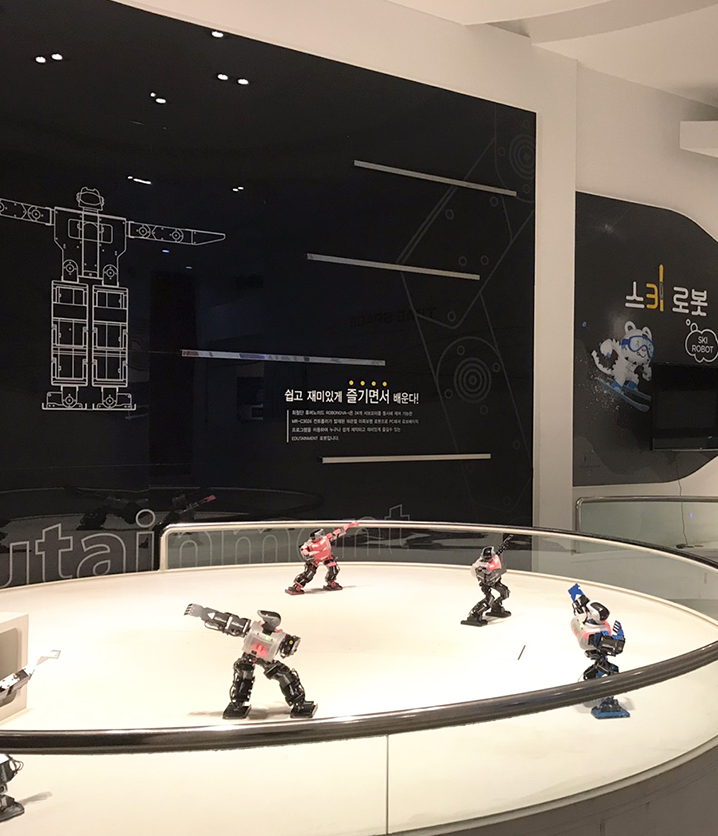
© KIRO
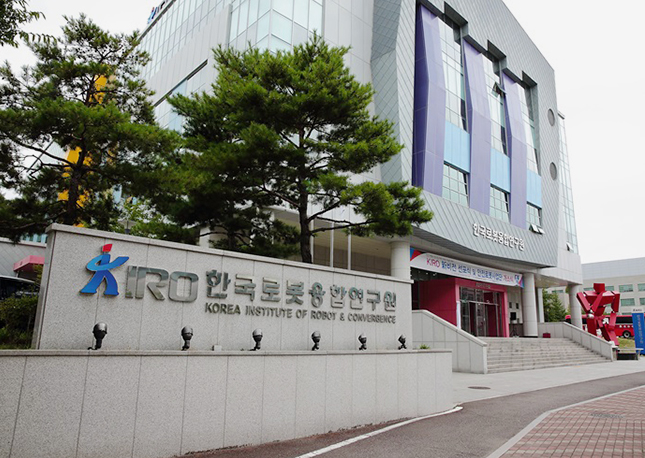
View of the Robo-Life Museum (first floor of KIRO).
The First Exhibition Hall: Intelligent Robot Fun Hall
The Robo-Life Museum, located on the first floor of the Korea Institute of Robotics & Technology Convergence (KIRO) in Pohang, Gyeongbuk Province, is a unique museum that showcases aspects of daily life with robots and the robot environment of the future. Though somewhat smaller than typical museums, it is an interesting place because visitors can touch and operate robots with which they do not usually interact. Some of the exhibited robots are commercialized for use in homes or at industrial sites.
The first exhibition hall is the Intelligent Robot Fun Hall, which is designed to show how intelligent robots can help us in our daily lives. The first robot that a visitor to the hall will see is SKIRO, a skiing robot. Standing 80cm tall and weighing 15kg, SKIRO is designed to be the size of a 3 to 4-year-old child, and features autonomous location recognition based on map generation, as well as autonomous speed control. The Korean Ministry of Trade, Industry and Energy held the Ski Robot Challenge in Hoengseong, Gangwon Province on February 12, 2018 in a bid to expand the foundations for robotics research, encourage talented people, and promote robot technology. Held as the world’s first skiing robot competition during the Pyeongchang Winter Olympic Games, the Ski Robot Challenge ranked the robots by the score and time record of robots having passed five sets of poles in a simulated giant slalom competition in skiing speed and rotation technology.
The most popular robot is Genibo, Korea’s first intelligent robot puppy, which can move around autonomously and express its emotions. It can recognize its owner through a camera attached to the tip of its nose and show her amiability. It can perform more than 100 actions such as dancing, standing upside down, and shaking.
Visitors can also watch various cute tricks by adorable robots in the first exhibition hall. They are Robonova, cutting-edge humanoid robots. Although the world’s first humanoid robot was a human-sized robot manufactured in Japan, these exhibits are small dancing robots that are very popular in robot competitions. Robonova robots certainly attract the attention of many visitors by bending joints and performing a group dance in time to the music.
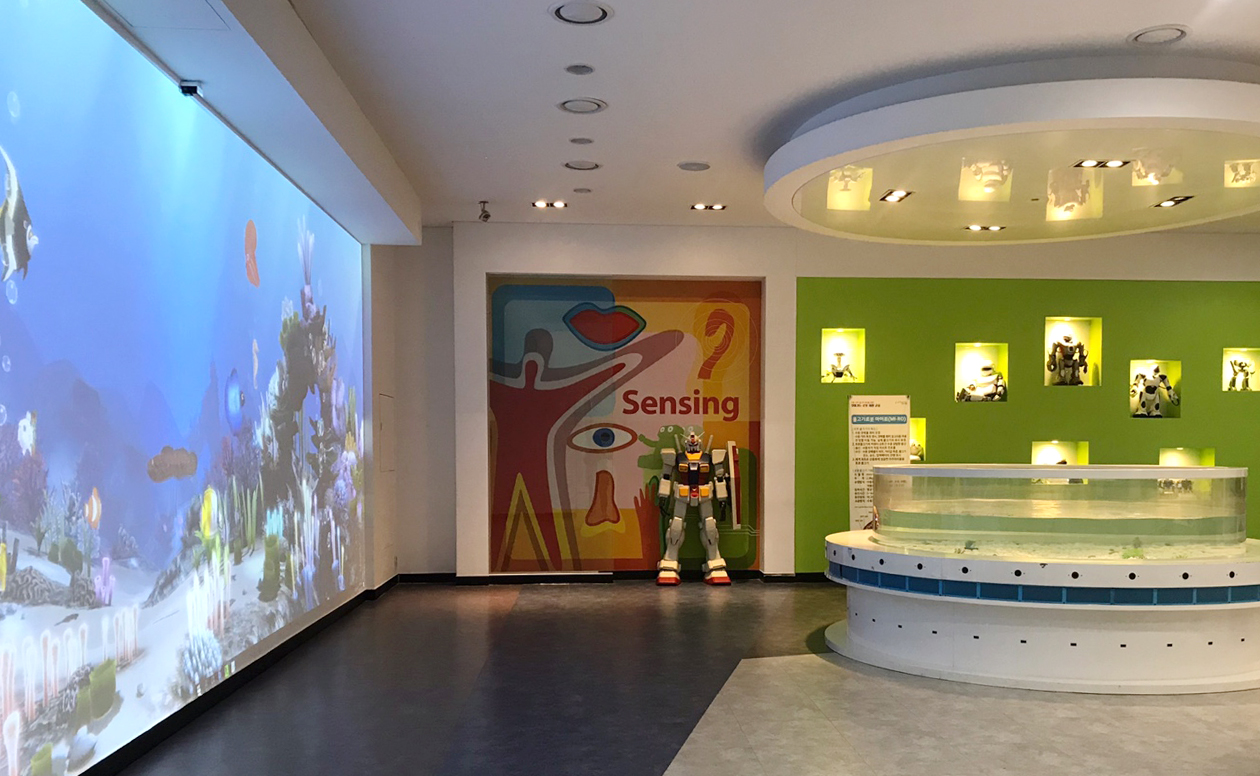
View of the second exhibition hall showing the fish robot and the Gundam robot.
The Second Exhibition Hall: Intelligent Robot Experience Hall
The second exhibition hall is the Intelligent Robot Experience Hall, which is designed to enable visitors to understand the principles of intelligent robots in-depth and personally operate one. In addition, visitors can experience edutainment through intelligent robots engaged in various actions. A visitor entering the second exhibition hall will come across a fish swimming in a small aquarium. However, upon closer inspection, the visitor will see that it is not a fish but a robot. Children are mesmerized by the fish robot as it swims freely around the aquarium according to the sensor movements. Meanwhile, in another corner of the hall, soccer robots operate. Here, adults with children who are immersed in the game can operate the movements of wireless soccer robots.
A boxing robot is a popular experiential robot as its arm and leg joints can move freely like those of humans. Curious children can observe how the eyes, nose, and mouth of a robot move and have fun with the robot, making various expressions according to their emotions as the game progresses.
Among the other robots exhibited in the hall is Paro, a seal-shaped robot developed for psychological treatment in Japan in 2005. Equipped with sensors that can detect tactile, visual, and hearing senses, it was developed to reduce stress among inpatients in nursing homes and hospitals. In addition, Hello Kitty Robo is an interactive robot developed in Japan in 2004 that has an ultrasonic sensor on its chest enabling it to react whenever a person approaches. A microphone is attached to the ribbon, and a speaker and camera are attached to the head and eyes, respectively. The robot can engage in conversation through speech synthesis and identify up to ten faces through image recognition. Considering that such technologies were available 15 years ago, it is exciting to imagine how advanced the robots currently in development will be. Albert, a smart coding robot, Zoomer Kitty robots that sense the movements in front of their eyes and engage in adorable actions, and a sandbox for virtual reality and augmented reality are already available.
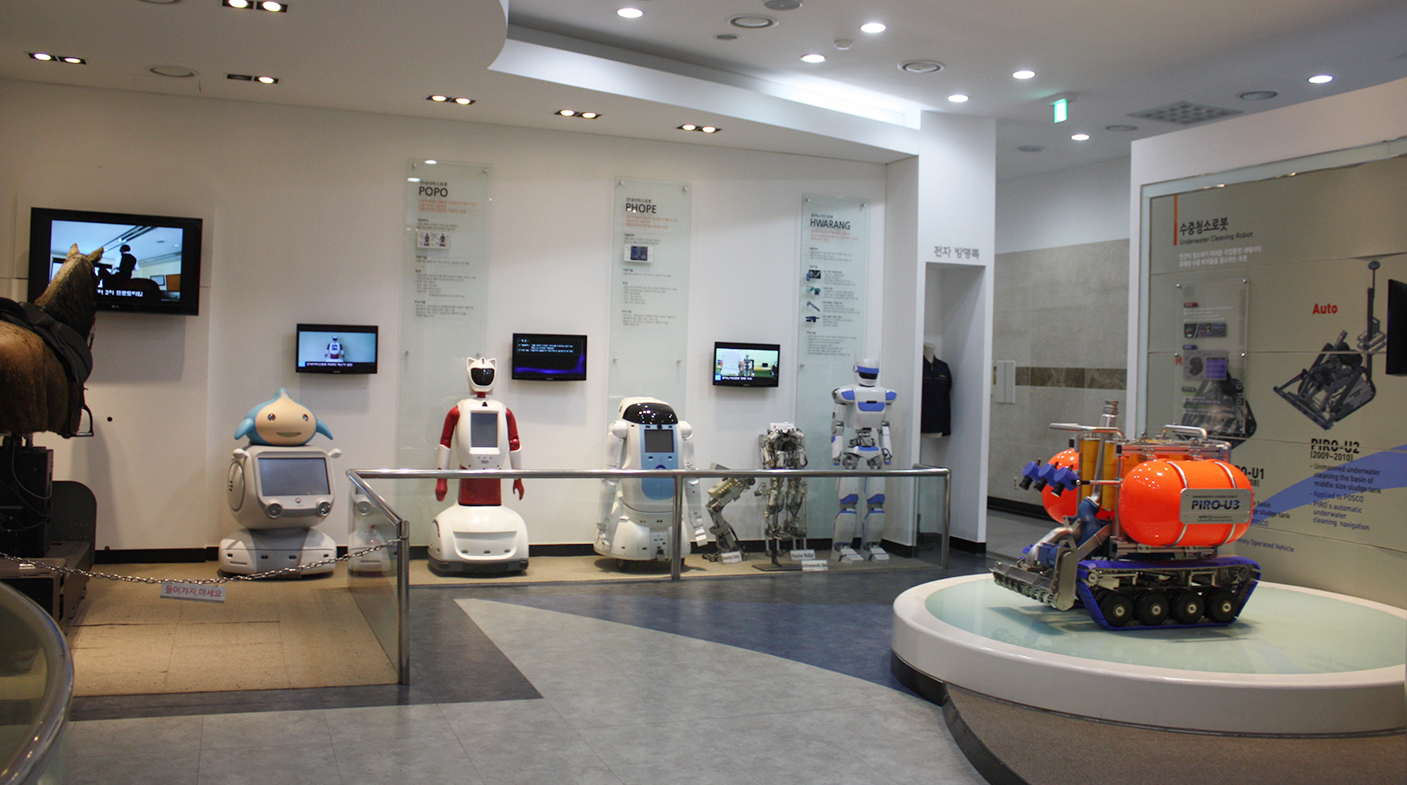
View of the third exhibition hall showing the robots that are currently being developed by KIRO.
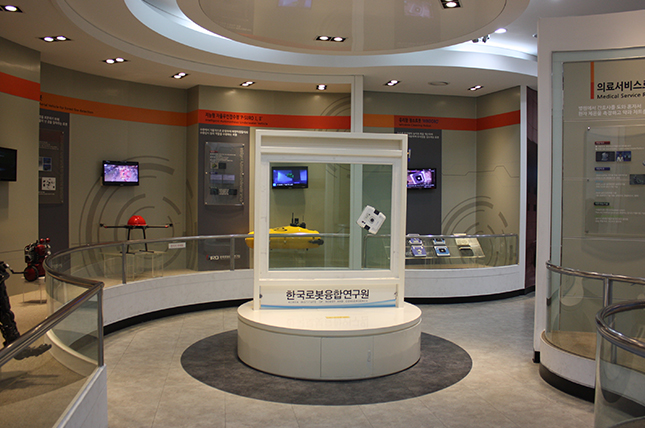
The third exhibition hall shows aspects of the future society that could be created by cutting-edge science and technology.
The Third Exhibition Hall: KIRO PR Hall
The third exhibition hall is the KIRO PR Hall, where visitors can meet and experience various robots developed by KIRO. The Hwarang Robot - which is based on the concept of Hwarang, a militaristic youth group of the Silla Dynasty - is a 150cm-tall walking humanoid robot equipped with an upright walking technology that enables it be used as a job support robot on industrial sites.
The room also showcases Windoro, the world’s first window cleaning robot, Korea’s first multi-purpose underwater robot, and a forest fire monitoring robot that detects forest fires on behalf of humans in order to preserve natural environment. KIRO is further developing these robots and other commercialized products. While the first and second exhibition rooms focus on the history and experience of robots, the third exhibition room shows the future society that cutting-edge science and technology could create.
In addition to the robot exhibition halls, the Robo-Life Museum also features the Robo Café, which has books and items related to robots, the Video Lecture Room, and the Robot Education Room. Anyone who wishes to visit the Robo-Life Museum (which opens three times per day at 10:00, 13:30, and 15:30) can make a reservation on the museum’s website by no later than the day before. And even children can enjoy a visit without difficulty because a guide explains the principles and functions of the robots in detail. We invite you and your children to the Robo-Life Museum, the dream space for future robot generation.
Information
- 1st FL, KIRO, 39 Jigok-ro, Nam-gu, Pohang, Gyeongbuk
- 82 - 54 - 279 - 0427
Robo-Life Museum



